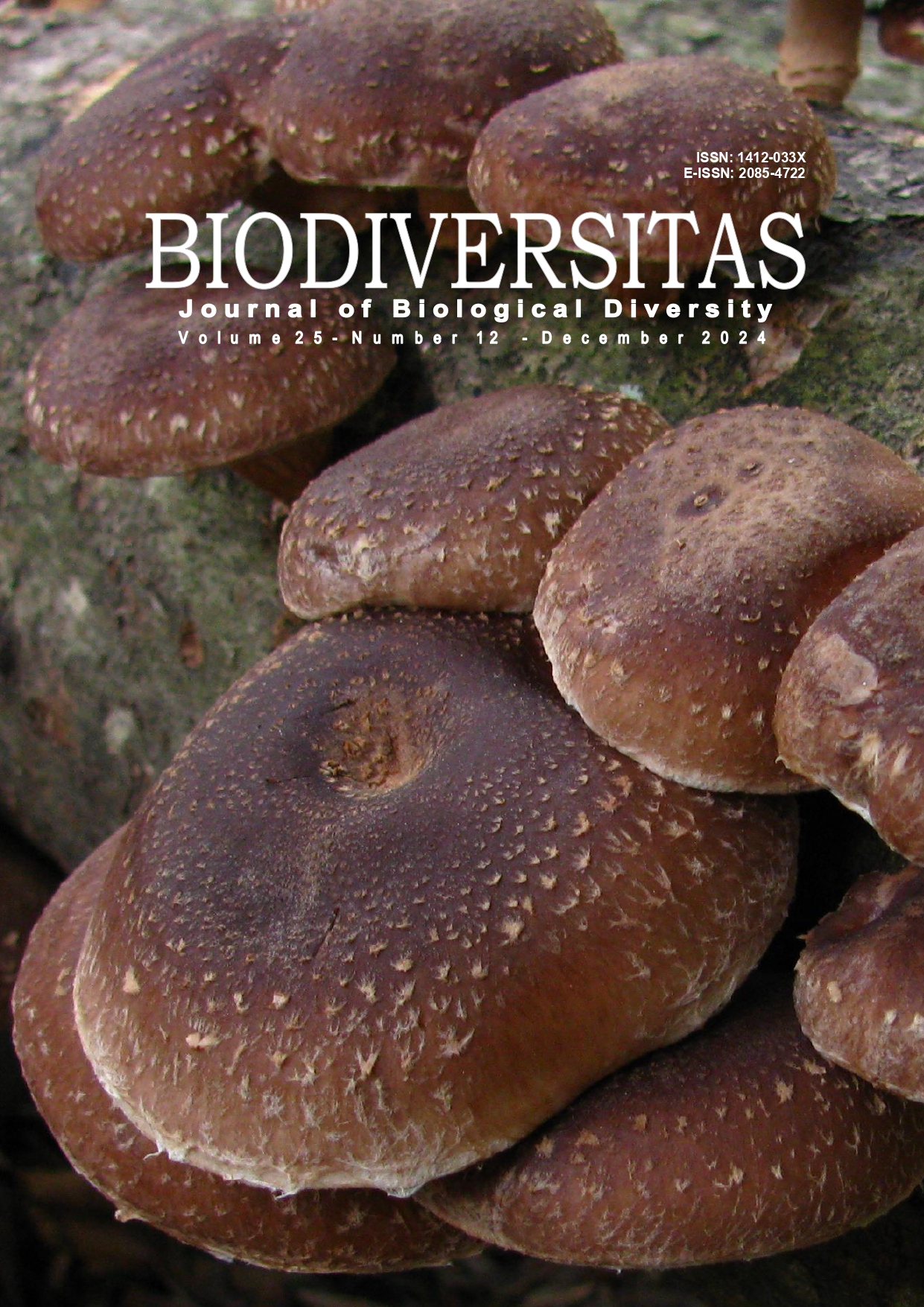Species diversity and distribution of Odonata in Brgy. Rogongon, Iligan City, Philippines
##plugins.themes.bootstrap3.article.main##
Abstract
Abstract. Magsalay DD, Nuñeza OM, Villanueva RJT. 2024. Species diversity and distribution of Odonata in Brgy. Rogongon, Iligan City, Philippines. Biodiversitas 25: 4909-4919. Odonata is an insect order often utilized as a bioindicator to help determine the health of an ecosystem. The Philippine Odonata is recognized to have high diversity and endemicity, especially the suborder Zygoptera, since its limited range and its habitat distribution are low. This study was conducted to provide baseline information on the species diversity and distribution of Odonata in Brgy. Rogongon, Iligan City, Philippines. The research employed an 'opportunistic method', a strategy that involves collecting data based on the availability of the species, using sweep nets as a collection tool. Therefore, 35 species belonging to 10 families under 25 genera were found. Results showed that the most abundant family is Libellulidae (S = 9), followed by the family Platycnemididae (S = 8). All the study sites showed moderate diversity (H' = 1.73 - 2.75). On the other hand, one endangered, three vulnerable, and two near-threatened Odonata species were recorded in this study. Moreover, the distribution trend of Odonata species along an elevational gradient in the study areas is that species richness and endemism increase until Site 2 (730 to 787 masl) and then decreases as the elevation increases. Factors such as habitat structure and level of disturbances could be the reason for such a trend. Environmental factors such as air temperature, relative humidity, water temperature, water pH, and streamflow affect the distribution and abundance of the Odonata based on the canonical correspondence analysis. Any alteration in the habitat in each study site would be a threat to the population of Odonata. Thus, there is a need to protect the remaining forest of Iligan City, especially since endangered and vulnerable species are present.

